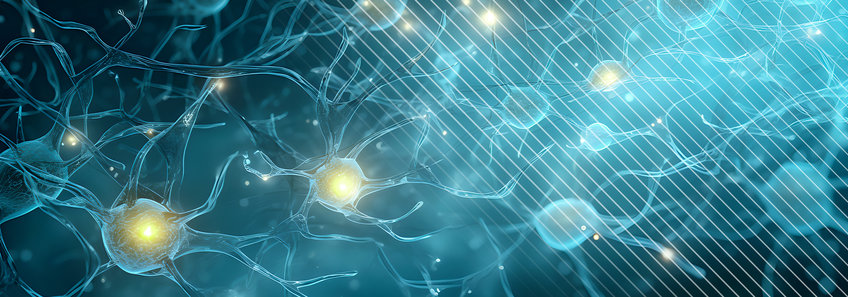
Max Planck Research Group Scheiblich
Neuroimmunology of Ageing
Microglia serve as the central nervous system's (CNS) primary immune cells, crucial for maintaining brain health and functioning. However, as we age, microglia undergo significant alterations, potentially shifting toward a dysfunctional, pro-inflammatory state. This change can substantially compromise the health and viability of nearby cells, potentially contributing to the onset and progression of neurodegenerative diseases. The primary goal of our group is to understand the mechanisms within microglia that regulate brain homeostasis and the deviations observed during ageing and neurodegenerative conditions.
Microglia are highly dynamic and responsive cells that promptly respond to homeostatic changes in their microenvironment. This adaptability allows them to transition between distinct functional states, from a surveillance-based housekeeping role to an activated state as adaptive responders. In their housekeeping capacity, microglia meticulously maintain CNS homeostasis by engulfing cellular debris, removing dysfunctional or dying cells, and clearing harmful protein aggregates, thereby preserving neural integrity. As adaptive responders, microglia adjust their functions in response to specific damage or danger signals, initiating immune responses targeted at containing and addressing threats. However, the ageing process can significantly impact this dynamic adaptability, compromising their efficiency in maintaining homeostasis and responding to insults. This shift in microglial behavior towards a pro-inflammatory state contributes to a chronic inflammatory environment within the CNS, which is implicated in the pathogenesis of age-related neurodegenerative diseases.
The overall goal of this research group is to understand the mechanisms by which microglia control brain homeostasis and to define their deviations during normal ageing and age-related diseases. In this way, we aim to shed light on the cellular and molecular changes in microglia that occur during ageing to circumvent the factors that contribute to neurodegenerative diseases. In doing so, we will place a special focus on the intercellular communication between microglia and other brain cells (neurons, astrocytes, oligodendrocytes), examining how microglia regulate and control their functional integrity.
Selected publications
Microglia jointly degrade fibrillar alpha-synuclein cargo by distribution through tunneling nanotubes
Scheiblich H, Dansokho C, Mercan D, Schmidt SV, Bousset L, Wischhof L, Eikens F, Odainic A, Spitzer J, Griep A, Schwartz S, Bano D, Latz E, Melki R, Heneka MTH
(2021) Cell, doi: 10.1016/j.cell.2021.09.007
Microglial NLRP3 inflammasome activation upon TLR2 and TLR5 ligation by distinct a-synuclein assemblies
Scheiblich H, Bousset L, Schwartz S, Griep A, Latz E, Melki R, Heneka MTH
(2021) J Immunol, doi: 10.4049/jimmunol.2100035
β-Amyloid Clustering around ASC Fibrils Boosts Its Toxicity in Microglia
Friker LL, Scheiblich H, Hochheiser IV, Brinkschulte R, Riedel D, Latz E, Geyer M, Heneka MT
(2021) Cell Rep, doi: 10.1016/j.celrep.2020.02.025
NLRP3 inflammasome activation drives tau pathology
Ising C, Venegas C, Zhang S, Scheiblich H, Schmidt SV, Vieira-Saecker A, Schwartz S, Albasset S, McManus RM, Tejera D, Griep A, Santarelli F, Brosseron F, Opitz S, Stunden J, Merten M, Kayed R, Golenbock DT, Blum D, Latz E, Buée L, Heneka MT
(2019) Nature, doi: 10.1038/s41586-019-1769-z
Activation of the NLRP3 inflammasome in microglia: the role of ceramide
Scheiblich H, Schlütter A, Golenbock DT, Latz E, Martinez-Martinez P, Heneka MT
(2017) J Neurochem, doi: 10.1111/jnc.14225
Highlights |
|
|---|---|
| 2024 – 2027 |
Alzheimer Forschung Initiative
Role of intercellular neuron-microglia contacts in tauopathies |
| 2023 |
Cluster of Excellence ImmunoSensation
Funding of junior research group |
| 2020 – 2023 |
Gemeinnützige Hertie Stiftung
Unravelling an “on demand” α-synuclein degradation strategy in microglia |